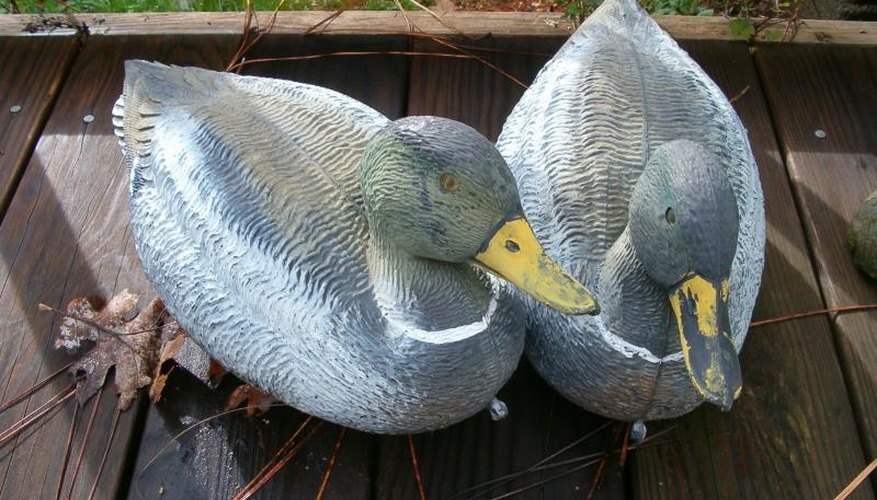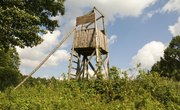
Even new decoys eventually lose their luster, so most waterfowl-hunting sportsmen should learn how to paint duck decoys. While you need not be a professional artist to create a reasonable facsimile of a live duck, you must understand the basic process and materials necessary for the job. After preparing the decoys properly and painting the major parts, you must let them dry fully and add a protective coat.
Proper Preparation
Before picking up a paintbrush, you must ensure that your decoys are clean and ready to accept the paint. Clean plastic decoys with a stiff-bristled brush and soapy water, then rinse them thoroughly and allow them to dry. Jeff Matura of Take’ Em Calls, manufacturer of wooden duck calls, recommends using an acetone-soaked rag to remove any chemicals that may be present on new foam decoys. Treat cork-based decoys with at least two coats of spar varnish to prepare them to accept paint.
The Painting Process
Do not worry about making a stencil, just freehand the colors and outlines. It does not matter if the left wing bar is slightly more tapered than the right is; what matters is that the overall appearance – particularly the colors – looks right. Fortunately, the contours of decoys help you to paint inside the lines. Use a 1-inch foam brush to apply paint to large colored areas, such as the sides, heads and back; use a small artist’s paintbrush for detailed work. Strive to apply thin layers of paint to avoid filling depressions with too much paint.
Correct Colors
Birds see color exceptionally well, so you must use colors that very closely mimic those of real ducks. Craft stores often carry a wide variety of colors, but home improvement stores and paint retailers will usually mix custom colors for you. Some decoy manufacturers and paint companies publish lists of premixed colors that are appropriate for painting different decoy species. After allowing your painted ducks to dry for three to four weeks, spray the decoys with two coats of clear, exterior matte finish to protect the paint and impart a realistic sheen.
Refurbishing Old Decoys
Wash old decoys thoroughly to ensure a clean surface that will readily accept fresh paint. You can do so by hand, but it is quicker to place your decoys in a mesh bag and spray them with a pressure washer – be sure to place the pressure water on a low setting to avoid damaging your decoys. If you like, you can apply a new coat of each color; but for a simple touchup, concentrate on increasing the contrast of the decoys to maximize their ability to catch the eye of passing ducks. For example, you can expand the white wing bars of females, add additional white feather markings to the tails, or enhance the black cap and neck stripe of mallard drakes.



